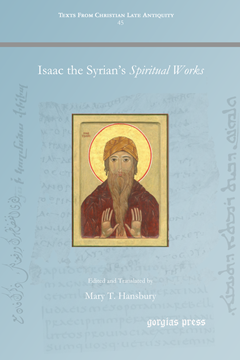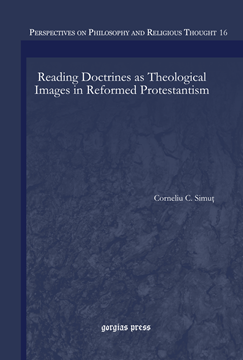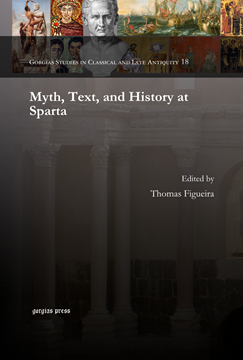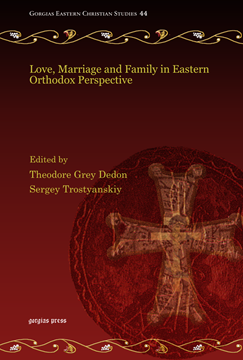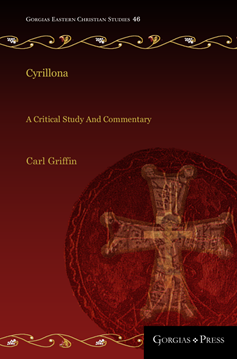Reshaping Identities in Late Antique Syria-Mesopotamia
Christian and Jewish Hermeneutics and Narrative Strategies
Series: Judaism in Context 19
ISBN: 978-1-4632-0590-4
This volume presents case studies of the phenomena that contributed to group identity in late antique Syria-Mesopotamia, in particular traditions reflecting interactions between Judaism and Christianity, among various Christian groups, and among other religious traditions of late antiquity (such as Zoroastrianism or 'paganism'). By studying Christian, Jewish and other sources that deal with the establishment, modification and deletion of boundaries, the authors seek to create a frame of reference that will in turn explain and contextualise the existing evidence concerning communication and interaction between highly diverse groups in Late Antiquity.
$151.00 (USD) $90.60 (USD)
Journal of Language Relationship 13/3-4
Volume 13/3-4
Series: Journal of Language Relationship 13/3-4
ISBN: 978-1-4632-0592-8
The Journal of Language Relationship is an international periodical publication devoted to the issues of comparative linguistics and the history of the human language. The Journal contains articles written in English and Russian, as well as scientific reviews, discussions and reports from international linguistic conferences and seminars.
$84.00 (USD) $50.40 (USD)
Isaac the Syrian's Spiritual Works
Edited and Translated by Mary T. Hansbury
Series: Texts from Christian Late Antiquity 45
ISBN: 978-1-4632-0593-5
Isaac the Syrian lived the solitary life in the 7th century. He was born in Qatar and subsequently lived in present day Iraq and Iran. After life as a monk, then briefly as a bishop, he withdrew to live the solitary life. These discourses are primarily for solitaries to consolidate them in the love and mercy of God. In this volume, the text of Isaac V has also been included because of the light which it sheds on Apocatastasis, of increasing interest in academic and ecclesial circles.
$90.00 (USD) $54.00 (USD)
Reading Doctrines as Theological Images in Reformed Protestantism
ISBN: 978-1-4632-0594-2
The book focuses on four doctrines recommended to readers as “theological images” which, given their theoretical and practical importance, turn out to be genuine patterns for Reformed Protestantism. The four theological images investigated throughout the book—the image of marriage, the image of worship, the image of God, and the image of Moses (as pointing to salvation)—were extracted from the works of Reformed theologians belonging to the French/French Swiss and the English traditions: Guillaume Farel and Jean Calvin, John Bradford and Richard Hooker respectively.
$155.00 (USD) $93.00 (USD)
Myth, Text, and History at Sparta
Edited by Thomas Figueira
ISBN: 978-1-4632-0595-9
Three studies that offer close readings concerning the interaction of the source material on Spartan history with the unfolding of actual historical events. These contributions take the position that not only political, but also social, policies at Sparta, as well as the historical actors giving them shape, were intensely─and to an unusual degree─influenced by myth, tradition, and popular memory about the Laconian past.
$170.00 (USD) $102.00 (USD)
Love, Marriage and Family in Eastern Orthodox Perspective
Edited by Theodore Grey Dedon & Sergey Trostyanskiy
Series: Gorgias Eastern Christian Studies 44
ISBN: 978-1-4632-0596-6
This volume offers an array of theological and sociological studies on Family, Love, and Marriage in the Eastern Orthodox tradition. As new ways of understanding these institutions and concepts emerge in a modern society, this compilation sponsored by the Sophia Institute of Eastern Orthodox Studies incorporates a revisiting of biblical and Patristic understandings as they are received in the wider Orthodox Christian perspective.
$167.00 (USD) $100.20 (USD)
Jacob of Sarug's Homilies on Praise at Table
Edited and Translated by Jeff W. Childers
Series: Texts from Christian Late Antiquity 46
ISBN: 978-1-4632-0605-5
Part of a series of fascicles containing the bilingual Syriac-English editions of Saint Jacob of Sarug’s homilies, this volume contains his homilies on Praise at Table. These homilies offer a glimpse into the efforts of one late antique author to construct distinctly Christian meaning from the experience of communal meal-sharing. The Syriac text is fully vocalized, and the translation is annotated with a commentary and biblical references. The volume is one of the fascicles of Gorgias Press’s The Metrical Homilies of Mar Jacob of Sarug, which, when complete, will contain all of Jacob’s surviving sermons. Recognized as a saint by both Chalcedonian and non-Chalcedonian Christians alike, Jacob of Sarug (d. 521) produced many narrative poems that have rarely been translated into English. Of his reported 760 metrical homilies, only about half survive.
$47.00 (USD) $28.20 (USD)
The Works of Cyrillona
Edited and Translated by Carl Griffin
Series: Texts from Christian Late Antiquity 48
ISBN: 978-1-4632-0606-2
Cyrillona (fl. 396) has been ranked among the foremost early Syriac poets since his work was rediscovered by scholars in the mid-19th century. His Holy Week discourses on the Last Supper, the Washing of the Feet, and the Institution of the Eucharist have become particularly well-known to western readers through quotations by such diverse authors as Hugo Rahner and Photina Rech. This volume presents the first modern critical edition of Cyrillona’s Syriac works together with the first complete English translation.
$60.00 (USD) $36.00 (USD)
Cyrillona
A Critical Study and Commentary
By Carl Griffin
Series: Gorgias Eastern Christian Studies 46
ISBN: 978-1-4632-0607-9
Cyrillona (fl. 396) was a younger contemporary of Ephrem the Syrian whose work has been celebrated as comparable in both beauty and its significance for our understanding of early Syriac Christianity. This study reassesses conventional claims about the author’s identity, date, and the constitution of his corpus. It introduces each of Cyrillona’s five surviving poems and examines their poetic form and genre, structure and rhetorical features, and critical questions of text, interpretation, and theology.
$169.00 (USD) $101.40 (USD)
From Ancient Manuscripts to Modern Dictionaries
Select Studies in Aramaic, Hebrew, and Greek
Edited by Tarsee Li & Keith Dyer
ISBN: 978-1-4632-0608-6
These articles on Aramaic, Hebrew, and Greek lexicography have arisen from papers presented at the International Syriac Language Project's 14th International Conference in St. Petersburg in 2014.
$211.00 (USD) $126.60 (USD)


